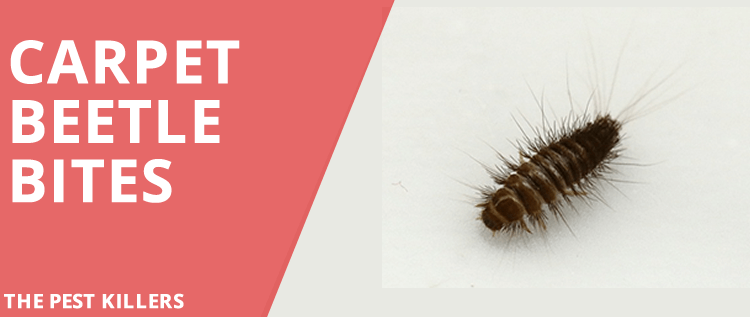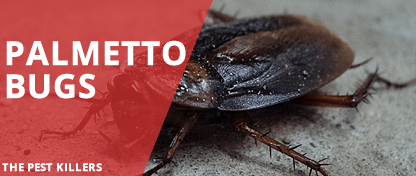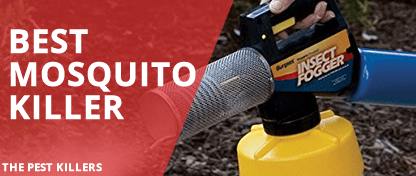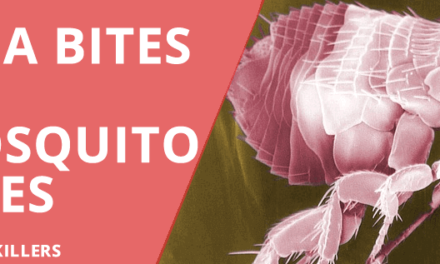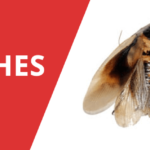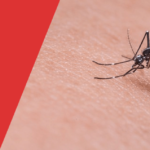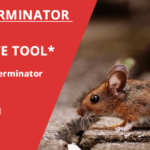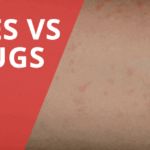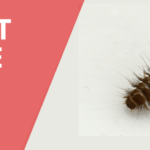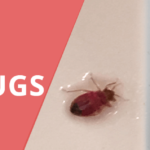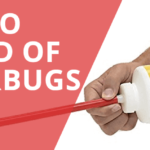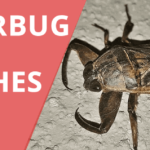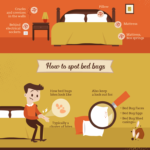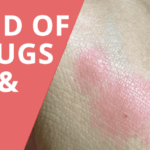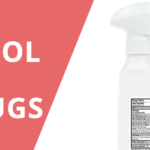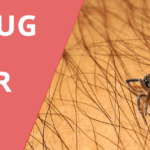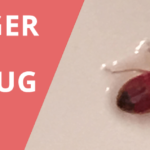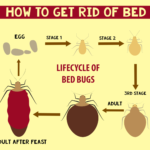Do Carpet Beetle bites exist?
While Bed bugs love to bite, the truth of the matter is that carpet beetles do not bite. In fact, what appears to be carpet beetle bites is an allergic reaction due to the hair bristles (fur) of the carpet beetle larvae.

Adult carpet beetles do not bite or even eat up fabrics, however, there larvae form isn’t as courteous. Carpet beetles larvae can potentially lead to potential damage to your furniture, carpets, and all fabrics around your house. (Hence the name carpet beetle)
Carpet beetles expand their diet to include clothes, hair, silk, fur, wool, as well as other fibrous materials.
In fact, not even your plants are safe! On a positive note, though, you won’t have to experience any painful and itchy bites as you do with bed bugs. However, the hair bristles of carpet beetles can lead to an allergic reaction.
What are carpet beetles?
Carpet beetles, alternatively called carpet bugs, belong to the family of dermestids and are usually smaller compared to bed bugs. Generally, adult carpet bugs have a black or a dark reddish-brown color, depending on their species. Their length varies typically from 3mm to 5mm and minute hair covers the length of the body. Meanwhile, carpet beetle larvae measure up to 12mm in length and can be easily distinguished by the presence of hair tufts.

Typically, carpet beetles have eleven segments to the antennae, and the shape resembles that of a club. Both male and female carpet beetles have antennae. However, the difference is that males have comparatively longer antennae. Moreover, a hard exterior shell hides membranous wings within. Carpet beetles have a mouth particularly made for chewing fibrous materials, including plants. However, they don’t bite humans.
Habitat and Food
Geographically, carpet beetles can be found across the world. While Carpet beetles do live in the outdoors, they prefer to live indoors near humans so that they can get easy access to shelter and food. Once inside a house, carpet beetles prefer to stay in dark areas which is why you’ll often find them living under furniture or baseboards and inside cabinets. For ease of feeding, carpet beetles live near food sources so you can easily spot them inside upholstered furniture, edges of a carpet, and around door casings.
Do they bite?

Similar to dust mites, carpet beetles are harmless to put humans and pets. On the other hand, they are still termed as destructive household pests because of their eating habits. Carpet beetles eat all sorts of organic products including leather, vegetable waste, animal hair, plant remains, etc. So, with these pests, there is no need to worry about harmful or painful insect bites. However, living in a house which has been infested by these bugs can trigger allergies, particularly in those that have a hypersensitive immune system.
Symptoms of bite
Instead of the bite, a human’s affected skin is punctured and then diagnosed with a skin disease such as dermatitis, allergic rhinitis, vasculitis, and lymphadenopathy. As a result, the affected person will see red lesions on the skin that are not actual bites, but instead, an allergic reaction.
Treatment of bites
If you have been bitten by a carpet beetle, then there are a few treatments you can take to get rid of the symptoms of the allergic reaction and cure the problem. Here are four of the top treatments:
Carpet Beetle vs Bed Bugs – Difference
| Carpet Beetles | Bed Bugs | |
|---|---|---|
| Size & Color | 2mm - 3mm. Black/ dark reddish-brown. | 0.25mm - 4.5mm. Brown. |
| Bite Appearance | Red and itchy welt. | Red, itchy bump. Usually in a line or pattern. |
| Bite Cause | Allergic skin reaction from the larvae stage. | Bite marks from the blood meal |
| Environment | Carpets, food source area. Wool and fabrics. | Bedding area, cracks, and crevices. |
Carpet Beetle vs Bed Bug – Appearance
While bed bugs are reddish-brown, the color of carpet beetles depends on their type. In fact, some species also appear similar to a yellow and black ladybug. Moreover, bed bugs are flat and are similar to the size of an apple seed. Meanwhile, carpet beetles have round bodies and short antennae.
Carpet Beetle vs Bed Bug Bites

As stated previously, carpet beetles don’t bite humans. While bed bugs damage the skin, carpet beetles mostly damage your belongings. However, carpet beetles and bed bugs do leave similar evidence on your skin. Bedbugs contain an anticoagulant and an anesthetic into the skin with its mouth, thus resulting in an actual bite. The saliva due to bed bug bites leads to an allergic reaction too which registers itself in the form of itchy and raised red-colored welts.
While carpet beetles can leave red bumps on the skin, they are not real bites. Instead, they are rashes and bumps which are caused because of an allergic reaction to the bristles or hairs present on the abdomen of the larvae. The allergy could also be because of the traces of the carpet beetle’s blood.
Signs of carpet beetle infestation
While there are many different kinds of species, most adults have an oval shaped and mostly have a black and white color.
Carpet beetles can enter your house through gaps or holes in doors or windows, or even through tears in the screen. Similarly, they can also enter your house with a bouquet of fresh flowers so make sure to inspect them thoroughly before bringing them inside. With the following signs, you can easily identify carpet beetles.
1. Thin areas on wool products
If you have wool rugs in your house, then it could be an ideal place for carpet beetles. Carpet beetle larvae tend to feed in hidden, dark areas; thus, they are rarely spotted. However, they eat slits in wool rugs, making them easily recognizable. You can often find them on the underside of carpets or rugs.
2. Damage to different fabrics
 One way to easily recognize carpet beetles is to look for damaged fabrics such as damage to blankets, wool clothes, leather book bindings, furniture upholstery, etc. These bugs tend to eat the nap from the fabric’s surface, leaving only the basal threads. In some cases, they might even eat complete holes through the fabric, causing very visible or irreversible damage. Soiled items, particularly those that are stored without cleaning have a high chance of being infested.
One way to easily recognize carpet beetles is to look for damaged fabrics such as damage to blankets, wool clothes, leather book bindings, furniture upholstery, etc. These bugs tend to eat the nap from the fabric’s surface, leaving only the basal threads. In some cases, they might even eat complete holes through the fabric, causing very visible or irreversible damage. Soiled items, particularly those that are stored without cleaning have a high chance of being infested.
3. Hair falling out of trophy heads
When carpet beetles feed on bristle brushes, animal mounts, or furs, they clip off the hair present at the base, thus leaving a bald spot. The hide beneath, however, is not damaged.
4. Larval skins in hidden areas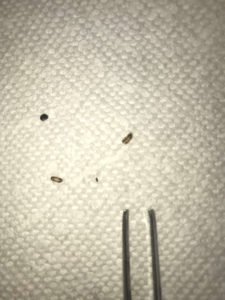
The pesky carpet beetle larvae tend to shed or mold their skins many times while they grow and mature. Once they go out of their larval stage, they leave behind empty, light brown colors skins that accumulate areas in those areas where larvae feed. So, to confirm if there are carpet bugs in your house, take a look in folds on wool blankets or clothing or on the underside of the rugs.
Also check under the furniture or in those corners where dead insects, pet hair, and lint collect. Furthermore, another sign that confirms a carpet beetle infestation are fecal pallets that are roughly the same size as a salt grain.
5. Dark dots on light walls
A carpet beetle infestation can also be confirmed by the presence of dead beetles on the windowsills or by tiny beetles attempting to climb the walls. Once mature beetles emerge indoors, they need to get out to mate. Especially in the early spring months, these bugs head towards the light so you might be able to spot them on light-colored walls. On closer inspection, you will find them to be calico-colored carpet beetles.
Treatment of carpet beetle infestation
While carpet beetle bites are not harmful to your health, they can still damage possessions that are dear to you. Therefore, once you identify the signs of a carpet bug infestation, you need to take pest control actions instantly.
Contact a professional pest control
Carpet beetles feed mostly in concentrated segments. Since carpet beetles are quite resilient, DIY techniques usually don’t produce effective results. In some cases when they do, these results are quite short-term, thus leaving DIY tips ineffective. Only with professional help can you eliminate the carpet beetle infestation completely. For the best results, you need to choose a qualified and experienced professional pest control company.
Preventions of carpet beetle infestation
Regardless of carpet beetle bites not being harmful, it is still important that you take the necessary precautionary measures. With the following measures, you can ensure that you don’t face allergies or any monetary damage because of these carpet bugs.
1. Regularly vacuum the carpet
One effective way to remove carpet beetles is to vacuum areas where these pests are commonly found . Don’t forget to vacuum over the surrounding areas too, to not take any chances. Moreover, clear all the cluttered spaces in your house too and pay special attention to rooms where linens and clothing are stored. Lastly, make sure to vacuum your pet’s blankets and bedding, along with fabrics that you can’t launder like rugs and curtains.
. Don’t forget to vacuum over the surrounding areas too, to not take any chances. Moreover, clear all the cluttered spaces in your house too and pay special attention to rooms where linens and clothing are stored. Lastly, make sure to vacuum your pet’s blankets and bedding, along with fabrics that you can’t launder like rugs and curtains.
It is best you to vacuum every day so that you get rid of eggs, larvae, and adult carpet beetles.
2. Launder the fabrics
Make sure you launder clothes that are not packed up in airtight boxes, even if you don’t see any beetles on them. If your closet has been infested, then start by throwing away clothes that are beyond repair. This way, it is easier to put a stop to the infestation.
3. Make use of extreme temperatures
Extreme temperatures are quite helpful for killing carpet beetles as well other pests. To kill carpet beetles using extremely cold temperatures, wrap the fabrics in plastic bags. Then, place these bags in the freezer four two days. After two days, you will see that eggs, larvae, and adults are all dead.
4. Use vinegar as a surface cleaner
Despite being a common kitchen ingredient, vinegar is also known to a natural and effective cleaning agent. By using apple cider vinegar or white vinegar, you can scrub away food and grime stains from carpets, furniture, and clothes. Since carpet bugs love to eat dust and food particles, vinegar will help to deter carpet beetles, as well as other pests from feeding off them.
5. Use boric acid
A naturally occurring compound, boric acid is an effective chemical that eliminates carpet beetles and water bugs from the house. Boric acid is harmless; however, you still need to follow the product label. Use it on moldings, behind baseboards, and in cracks and crevices to keep the carpet bugs away. Remember, boric acid can bleach fabrics so use this chemical with caution.
Carpet Beetle Bites – Conclusion
The bottom line is, while carpet beetles don’t bite humans or animals; however, carpet beetles in the larval stage can cause allergies. On the other hand, bed bugs love to have a blood meal. Moreover, carpet beetles can substantially damage clothes, upholstered furniture, carpets, and other fabrics.

